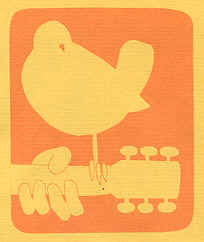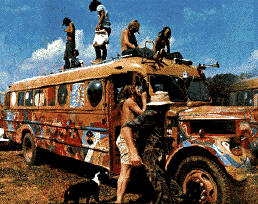Briarpatch, Hippie Entrepreneurs, and Open Books, Part 1
- Published
- Posted in A Post Written for this Blog / CW Advice
- 0 Comments
- 4 mins read



Not to long ago, I got a request from a member of the Briarpatch (the alternative business network I coordinate) to listen to a podcast her godson had created about hippies and the counterculture movement of the 1960s. The response I wrote to him follows:
I’m a friend of Xxxxx’s and coordinator of the “hippie” business network she has been a member of for many years. She invited me to listen to your podcast and I thought it was delightful and pretty damn accurate. As she pointed out, she was in the incubator of the East at the time which from the beginning produced a lot of activists. But not all hippies were activists. In the 60s, many were artists, musicians, and college students with a counterculture agenda but without any social or political agenda.
Regarding your question about what created the “hippies,” again, I think Xxxxx was on to something when she mentioned all the mind-altering potions that were floating around back then. Even weed by itself tended to create a mindset of relaxation and mellowness that had mostly been the purview of beatniks and jazz musicians up to that time.
That’s what “feelin’ groovy” referred to and you didn’t have to work hard to get into that state. (I exaggerate to make a point. There were other factors, I’m sure, but none alone so powerful. When millions take up a mind-altering habit, it has a much bigger impact on society and culture than when restricted to the fringes.)
Scott McKenzie’s 1967 song “San Francisco” (https://www.youtube.com/watch?v=X1tnpLs1lns) acted as an invitation for a mass migration of the disaffected just in time to create the Summer of Love that same year. Co-incidentally marijuana, LSD, psilocybin mushrooms, and more were readily available anywhere in the Haight. It was estimated that more than 100,000 young people from across the country showed up.
As a group, Beatniks were few in number, but San Francisco was loaded with them. In some ways, they served as examples and mentors of the possibility of an alternative culture. Those are quite possibly the top two facilitating factors for the opening up that became the “hippie” mindset.
So many people were interested in the new music (Grateful Dead, Big Brother & the Holding Company, Jefferson Airplane, for example) and the huge cultural event of “Woodstock” (where several hundred thousand young people showed up for 3 days of mud and musical acts) that Bill Graham and Chet Helms were inspired to start booking hippie concerts. You can trace a long connected history of counterculture arts events from Woodstock to Burning Man (made possible by many hippy organizers and entrepreneurs).
In the ’70s, a bunch of social activists from the ’60s got together at a Whole Earth Catalog party and discovered that most of them were in business but doing it in a different way. When former banker Michael Phillips (author of Seven Laws of Money ) started advising hippie entrepreneurs in an office on the San Francisco waterfront, he was inundated with people looking for support in applying that better way to do business. He organized the semi-formal structure now known as The Briarpatch: A Network of Friends in Business. Their watchwords were “right livelihood“ and “simple living.”
The “different way” of doing business turned out to be a very simple belief that the best way to start and grow a business is to cooperate with everyone; everyone inside the business and everyone in nearby businesses. This ethic of cooperation is supported by “honesty and openness” which includes a willingness to share financial information which we call, simply, “open books.” Cooperation as a value also led to viewing competition as “others in my field” instead of hated adversaries. This environment supported business success rates that appeared to be the opposite of the 80% failure rate for new businesses reported by the U.S. Small Business Administration at the time.
There were plenty of alternative businesses applying some or all of these principles, including Ben & Jerry’s Ice Cream, Celestial Seasonings, Republic of Tea, The Body Shop, Tom’s of Maine, and many others.
The Briarpatch itself included relatively well-known businesses such as Stewart Brand’s Whole Earth contingency (Whole Earth Catalog, Whole Earth Review, Co-Evolution Quarterly, and the WELL [among the earliest online communities]), Smith & Hawken, Nolo Press (self-help law), and Joni Blank’s Open Enterprises (publisher Down There Press and retail sex store Good Vibrations – both “sex positive” businesses) to name a few. As with Stewart Brand, Paul Hawken, David Smith & Joni Blank, many members created multiple businesses across time. So it turns out that some “hippies” make damn good entrepreneurs.
Stay In Touch